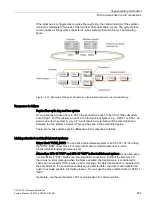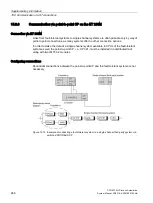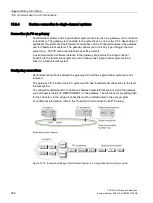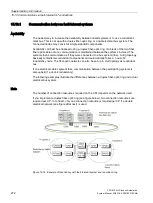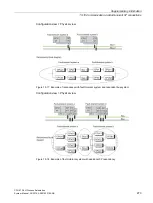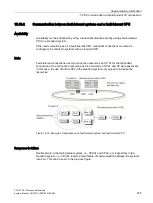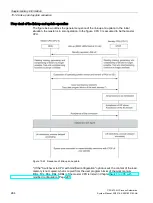
Supplementary information
15.10 Communication via fault-tolerant S7 connections
CPU 410-5H Process Automation
270
System Manual, 09/2014, A5E31622160-AB
Communication combinations
The following table shows the possible combinations of fault-tolerant connections via
Industrial Ethernet.
Local connec-
tion
end point
Local network con-
nection
Used network
protocol
Remote
network connection
Remote connec-
tion
end point
CPU 410
CPU-PN interface
CP443-1 (EX 20/30)
CP443-1 (EX20/30)
TCP
TCP
TCP
CPU-PN interface
CPU-PN interface
CP443-1 ( EX 30 )
TCP
TCP
TCP
CPU 410
CPU 41xH
V6/CPU 410
CPU 41xH V4.5
and higher/CPU
410
S7 fault
tolerant
connection
via
ISOonTCP
CPU 410
CP443-1 (EX 20/30) ISO
CP443-1
ISO CPU 41xH /CPU
410
S7 fault
tolerant
connection
via ISO
PC station
with Simatic
Net CD
CP1623 as of V8.1.2 TCP
TCP
CPU-PN interface
CP443-1 ( EX 30)
TCP
TCP
CPU 41xH
V6/CPU 410
CPU 41xH V4.5
and higher/CPU
410
S7 fault
tolerant
connection
via
ISOonTCP
PC station
with Simatic
Net CD
CP1623 as of V8.1.2 ISO
CP443-1
ISO CPU 41xH /CPU
410
S7 fault
tolerant
connection
via ISO
PC station
with Simatic
Net CD
CP1623 up to V7.x
ISO
CP443-1
ISO CPU 41xH /CPU
410
S7 fault
tolerant
connection
via ISO
Configuration
The availability of the system, including the communication, is set during configuration. Refer
to the STEP 7 documentation to find out how to configure connections.
Only S7 communication is used for fault-tolerant S7 connections. To set this up, open the
"New Connection" dialog box, then select "S7 Connection Fault-Tolerant" as the type.
The number of required redundant subconnections is determined by STEP 7 as a function of
the redundancy nodes. Up to four redundant connections can be generated, if supported by
the network. Higher redundancy cannot be achieved even by using more CPs.
In the "Properties - Connection" dialog box you can also modify specific properties of a fault-
tolerant connection if necessary. When using more than one CP, you can also route the
connections in this dialog box. This may be practical, because by default all connections are
routed initially through the first CP. If all the connections are busy there, any further
connections are routed via the second CP, etc.
You have to extend the monitoring time of the connection when you use long
synchronization cables.








